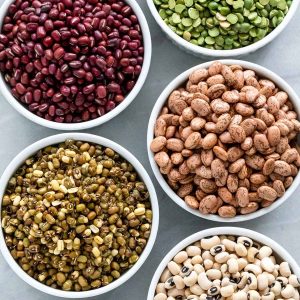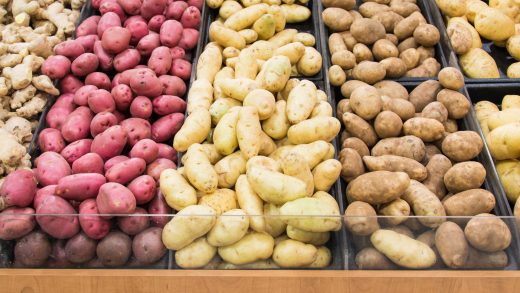Dried beans are an inexpensive staple. But are they really better than canned beans? Yes, they are. Some people think cooking dried beans are a hassle, a time-consuming process. But with a little practice, anyone can become a Master of the Beans!
First, let’s look at canned beans in comparison. There’s really nothing wrong with canned beans except for the texture and the salt. I use canned beans all the time, but I always drain and rinse them before adding them to my cooking. Also, canned beans are fully cooked and so need to be added at the end of cooking. Cooking beans from scratch gives you a more uniform, firmer texture while canned beans can be mushy.
Many canned beans now offer reduced-sodium versions, but personally, I don’t think there’s that big of a difference. You should always have some canned beans in your pantry. They make for easier, quick meals under the most adverse conditions. But you are paying a lot, both in money and nutrition, for that convenience.
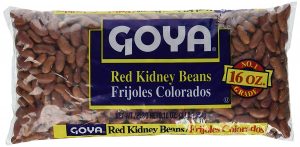
Dried beans you cook yourself make for big savings. A one-pound bag of dried beans turns into 5 or 6 cups of cooked beans. A can of beans, usually 15 ounces, comes out to about a cup and a half. If you are afraid of making so many beans at once, you should know they freeze very well and will keep in the refrigerator for three or four days. Those beans can be used at meals all around the clock. They go well with bacon and eggs. You can put them on top of a salad to up the protein level. Combine them with rice and vegetables for a nutritious side dish alongside your protein at dinner.
To Soak Or Not To Soak
Dried beans seem to last on the shelf for a long time. But the older the beans, the longer they will take to cook. The turnover is probably good enough at your local supermarket to ensure relatively fresh beans. Beware of small stores with limited selection. The beans there are probably old before they got the far down the supply chain. A good place to shop for dried beans is international grocery stores. Those are usually located in areas with lots of immigrants. Those immigrants like to buy brand names that are familiar and therefore create a high turnover rate.
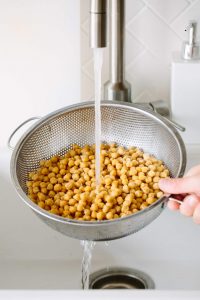
The first task in preparing your beans is to wash them. This will remove dust and will allow you to run your hands through the beans looking for small stones, often found inside a bag of beans or anything else that doesn’t belong there. Use a colander if the beans aren’t too small, otherwise, use a strainer. Rinse under running cold water, making sure the water runs clear before you stop.
The main reason for soaking beans is recommended is that it speeds up cooking time. However, it will not shave hours off your cooking time. Studies show it will save you about 30 minutes of cooking. But there is another reason, and it’s similar to the idea behind brining meats and poultry.
Most of us have been told that adding salt to soaking beans will make them tough. But Cook’s Illustrated magazine found if you soak beans overnight in salted water, they will absorb some of the salt, making additional seasoning optional, and it makes them more tender. So, overnight soaking in lightly salted water, enough to fully cover the beans, is recommended.
Stay away from any acid until the beans are cooked. Tomatoes, citrus, vinegar or wine will prevent the beans from cooking properly. But if you want that kick acid can bring it, add it at the end.
Basic Methods of Cooking Dried Beans
Almost all dried beans can be cooked the same way. The exceptions are small beans like lentils and split peas. Those cook much faster, usually don’t require soaking and can be ready in about 20 minutes. But all other beans use more or less the same method but with different cooking times. Cooking times will vary slightly depending on the type and size of the beans and how fresh they are.
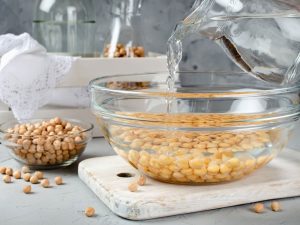
If you can, save the cooking liquid when the beans are done. That liquid is full of taste and nutrients that will add a lot to soups and stews.
A Master Recipe For Cooking Dried Beans
This seems like a long process, but really you spend only about 15 minutes of active time preparing this. One pound of dried beans will yield about 10 servings.
Ingredients:
- 1 pound dried beans
- 4 tablespoons of salt, preferable kosher
- 1 medium yellow onion, quartered
- 1 stalk of celery cut into 4 pieces
- 2 cloves of crushed garlic
- 2 sprigs of fresh thyme or a teaspoon dried
Directions
- Before rinsing the beans, sort through them on a kitchen towel to remove anything foreign like a pebble or a piece of wood.
- Fill a large bowl with 4 quarts of water and 3 tablespoons of salt. Add the beans, stir and cover. Use a little more water if needed to cover the beans by about an inch of water. Let the bowl sit overnight.
- The next day, drain and rinse the beans. Put them in a large sauce pan or a stockpot along with 7 cups of cold water. Stir in 2 teaspoons of salt, then bring the pot to a boil. You will see scum rise to the top of the water. This is protein solids and need to be scimmed off with a slotted spoon.
- Reduce the heat to medium-low so the beans simmer. Continue removing the scum from time to time until no more scum rises to the surface of the water.
- Once no more scum appears, add in the onion, carrot, garlic and thyme. Simmer the beans for about an hour until the beans are just tender. Check them from time to time for tenderness since, depending on the beans, they might cook faster.
- Drain the beans and discard the onion, carrot, celery and thyme, they have already given their all. Save the cooking liquid for use in other dishes.
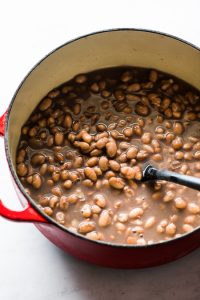
The beans are now ready to eat, add to a recipe or put into storage containers, one to two cups in each, and freeze.
Or You Can Use The Slow Cooker Method
Follow the same directions for soaking the beans overnight. Drain and rinse them (reserving the soaking liquid, if desired). Combine the beans with the onion, salt, carrot, celery, garlic and thyme in the slow cooker. Add enough water to cover the beans by about an inch. Cover and cook on high for 4 to 6 hours or until completely tender.
Beans are good food with lots of nutrition. They are versatile and can be eaten by themselves or as part of a larger dish. Save money and reduce your salt intake by making your own beans at least once a month.
